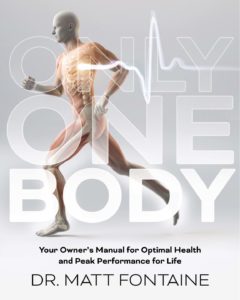15 May Tips on Returning to Sport After Injury
Tips on dealing with migrating pain during return to activity There are some key points to keep in mind when an athlete returns to sport after an injury. Consider the scenario of the runner returning to sport completing a treatment program for a shin splint type injury and that the patient is coming off active rest. Often times patients in this situation will complain of migrating pain that may be random and cover multiple areas. For example the patient being treated for shin splints may begin to experience foot pain or heel pain as they return to running. What was originally a case of shin splints ( anterior or posterior tibialis tendonitis) that was resolving may well now present with pain in the knee, arch of the foot, lateral ankle or shin. Basically as the pain is migrating around it indicates compensatory reaction. You must respect the process It is a process, not an event, that typically leads to many sports injuries. This is especially true for repetitive motion injuries. So what exactly is compensatory reaction? The body will always attempt to compensate for changes in tissue and movement to avoid pain or compensate for a restricted joint motion. A good sports medicine physician should reassure the patient athlete that there may have been weight bearing compensations that happened over time ( remember it is a process, Not an event!) that were not registering during treatment for the original “XYZ” injury. The physician should assure them that these are now registering during the push off phase in running and that it is likely safe to run through this discomfort. Advise them of the need to keep up their rehab: with LAX ball/ foam roller, foot wheel for mobility, core, balance work. As a physician I always make it a point to advise patients that it is critical to get in once weekly for ART, manipulation to hip, knee, foot and ankle during the return to running. It is important to note that this is a time issue and that despite our best efforts at treatment, we cannot outrun their body’s physiology. Although the convalescence period can be variable, we know ART, manipulation in conjunction with sound rehabilitative corrective exercise should clear these and symptoms reduction should occur in 4-6 visits. If not, the physician should suspect stress fracture or some other more morbid condition and order further imaging such as a bone scan or MRI. It is important that the physician gains the trust of the patient and remains confident in their approach. Ensure the patient that you are aware of all possible diagnoses and that you will evaluate all possible reasons why the are not responding. Be confident in your treatment. How much do we leave on the table? Let’s stick with our runner. On average, a runner will take an average of 2000 steps per foot covering one mile. What if your hip flexors are tight, gluteals are weak and you overpronate? These faults are causing overload each and every rep. It is a process. You must respect the process. With all these muscle imbalances and restrictions in joint motion, it is no wonder the body can develop pain in remote areas from the original injury site.




